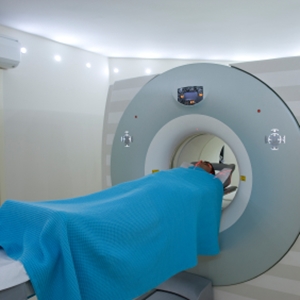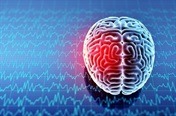
Patient undergoing a scan
iStock
A stroke is a medical emergency, as immediate medical care and treatment may be necessary to prevent life-threatening complications.
A doctor should confirm that the person has had a stroke, where it is located and to what extent the brain was damaged. These tests must be done as soon as possible, as immediate treatment can limit the extent of the neurological damage in a few patients. The diagnosis of stroke is not difficult: particularly in the setting of a patient with multiple risk factors such as diabetes or hypertension, sudden onset of weakness of one side of the body or sudden change in sensation of one side of the body are highly likely to be due to a stroke.
The practitioner first takes a medical history (if possible). The initial physical examination includes checking the blood vessels in the eyes for signs of atherosclerosis, and listening for unusual noises in the heart and in the prominent neck arteries. The doctor or specialist also measures the patient’s blood pressure and tests for strength, sensation and neurological reflexes.
To help determine the cause of the stroke, the doctor will have several other tests done, including a chest X-ray, an electrocardiogram, and a magnetic resonance imaging (MRI) scan or computerised axial tomography (CAT) scan. MRI uses magnetic fields to produce an image that provides information about the structure and biochemistry of the brain. CAT produces images of the brain by computer-analysed X-rays, which show structures or variations in the density of different types of tissue. These investigations help determine whether symptoms are the result of a stroke or some other brain disorder. CAT scan is cheaper and is usually the most appropriate test: intravenous contrast material should usually not be administered.
The doctor may also ask for other laboratory tests to be done, to determine whether other conditions are present. Other diagnostic tests may include:
• Sonar of carotid arteries in the neck
• Arteriography of the arteries supplying the brain, namely the carotid and vertebral arteries
• Other blood tests, such as full blood count, electrolytes, serum cholesterol
(Reviewed by Dr J. Carr, FCP(SA) Neurology, MSc(Med))
Read more:
Symptoms of a stroke
Treating a stroke
A doctor should confirm that the person has had a stroke, where it is located and to what extent the brain was damaged. These tests must be done as soon as possible, as immediate treatment can limit the extent of the neurological damage in a few patients. The diagnosis of stroke is not difficult: particularly in the setting of a patient with multiple risk factors such as diabetes or hypertension, sudden onset of weakness of one side of the body or sudden change in sensation of one side of the body are highly likely to be due to a stroke.
The practitioner first takes a medical history (if possible). The initial physical examination includes checking the blood vessels in the eyes for signs of atherosclerosis, and listening for unusual noises in the heart and in the prominent neck arteries. The doctor or specialist also measures the patient’s blood pressure and tests for strength, sensation and neurological reflexes.
To help determine the cause of the stroke, the doctor will have several other tests done, including a chest X-ray, an electrocardiogram, and a magnetic resonance imaging (MRI) scan or computerised axial tomography (CAT) scan. MRI uses magnetic fields to produce an image that provides information about the structure and biochemistry of the brain. CAT produces images of the brain by computer-analysed X-rays, which show structures or variations in the density of different types of tissue. These investigations help determine whether symptoms are the result of a stroke or some other brain disorder. CAT scan is cheaper and is usually the most appropriate test: intravenous contrast material should usually not be administered.
The doctor may also ask for other laboratory tests to be done, to determine whether other conditions are present. Other diagnostic tests may include:
• Sonar of carotid arteries in the neck
• Arteriography of the arteries supplying the brain, namely the carotid and vertebral arteries
• Other blood tests, such as full blood count, electrolytes, serum cholesterol
(Reviewed by Dr J. Carr, FCP(SA) Neurology, MSc(Med))
Read more:
Symptoms of a stroke
Treating a stroke




 Publications
Publications
 Partners
Partners












